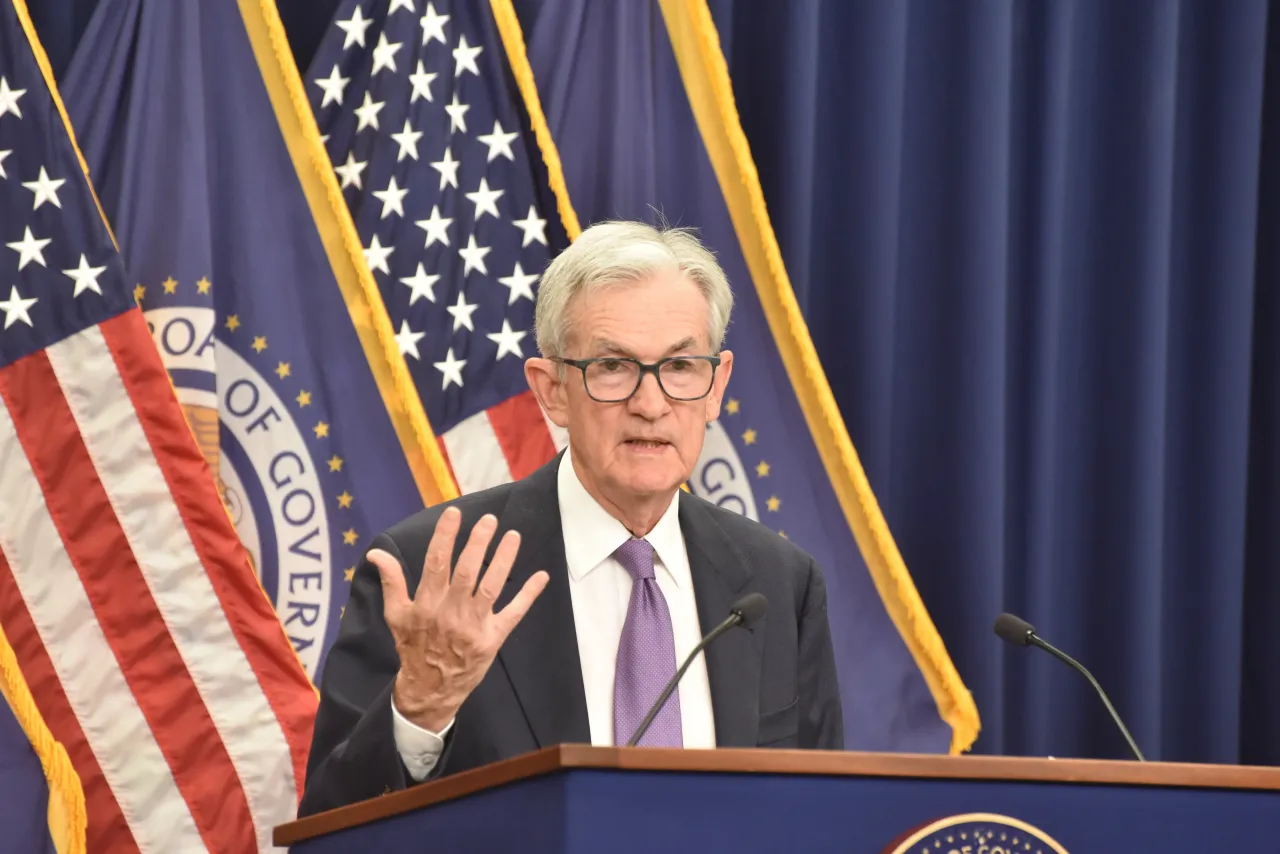What Early Wind-Down Means For Market?
An economist expects money market conditions to continue to tighten, though at a slower pace, as the economy continues to grow.
- Quantitative tightening is a monetary policy tool in which a central bank reduces the money supply to control inflation.
- An economist expects money market conditions to continue to tighten, though at a slower pace, as the economy continues to grow.
- Another strategist sees this as a market positive, as investors perceive this as a signal that financial conditions are easing.
The Federal Reserve Open Market Committee (FOMC) announced at the conclusion of its two-day monetary policy meeting that the central bank’s quantitative tightening (QT) will conclude earlier than what some economists predicted. This marked an end to the massive central bank intervention in the market, which it unveiled at the start of the COVID-19 pandemic in March 2020.
The Fed’s monetary-policy setting arm, headed by Chair Jerome Powell, also announced a quarter-point cut in the Fed funds rate to 3.75%-4%, aligning with expectations. This marked the first time since late 2022 that the rate is below 4% The decision to lower rates was adopted by a split vote.
But with Powell pouring cold water on a further rate cut this year, the S&P 500 Index edged down from its peak. Nevertheless, the SPDR S&P 500 ETF (SPY) and the Invesco QQQ Trust (QQQ), which track the S&P 500 Index and the Nasdaq 100 Index, respectively, have gained 18.3% and 24.8% year to date.
On Stocktwits, sentiment toward the SPY ETF remained ‘neutral’ as of late Wednesday, while that toward the QQQ ETF worsened to ‘bearish’ from ‘neutral’ a day ago. The message volume on both streams stood at ‘high’ levels.
What Fed Said About QT
In the post-meeting policy statement, the Fed said, “The Committee decided to conclude the reduction of its aggregate securities holdings on Dec. 1.”
Previewing the Fed decision earlier this week, Morgan Stanley Chief U.S. Economist Michael Gapen said he expects the Fed to announce the end of quantitative tightening by January, with balance sheet normalization beginning in February.
QT is a monetary policy tool in which a central bank reduces the money supply to control inflation. It is done either by selling securities from its balance sheet or by letting them mature without reinvesting the proceeds.
Since 2022, the central bank has been reversing the stimulus through QT, thereby shrinking its balance sheet by $2.2 trillion. This was being done at a measured pace to avoid a market meltdown. LPL Financial Chief Economist Jeffrey Roach sees the Fed’s move to end QT as reflecting its concern about the fragilities of the market.
Powell’s Take On QT
In the press conference that followed the Fed decision, Powell said, “Our long-stated plan has been to stop balance sheet runoff when reserves are somewhat above the level we judge consistent with ample reserve conditions.” “Signs have clearly emerged that we have reached that standard.”
He noted that the Fed’s balance sheet, as a share of nominal GDP, has fallen from 35% to about 21%. The reinvestment into Treasuries will also help move the weighted-average maturity of our portfolio closer to that of the outstanding Treasury stock, furthering the normalization of our balance sheet composition, Powell said.
Implications Of End Balance Sheet Run-off
Comerica Chief Economist Bill Adams said the Fed will start holding the size of its bond portfolio steady, beginning on Dec. 1. The central bank will accomplish this by reinvesting the principal of maturing Treasury bonds into new Treasuries, and by reinvesting maturing mortgage-backed securities into Treasuries, too, he added.
The economist noted that the Fed’s balance sheet reductions have started to tighten liquidity conditions in money markets, as seen in the spread between the Secured Overnight Financing Rate (SOFR) and the federal funds rate, among other indicators. SOFR is the broader measure of the cost of borrowing cash overnight, collateralized by Treasury securities.
Adams said, “Money market conditions will continue to tighten as the Fed holds its bond holdings steady, but at a slower pace, since the economy will continue to grow and the Fed’s balance sheet won’t keep pace.” “At some point between March and September 2026, the Fed will likely start increasing the size of its balance sheet to keep pace with the growth of the economy.”
Macquarie strategist Thierry Wizman said some traders will interpret the end of QT as another policy measure intended to boost the economy, according to a MarketWatch report published ahead of the Fed decision. BofA strategist Marc Carbana, however, warned of the risk that the central bank could suck too much liquidity from the system. The Fed has let too many reserves roll off its balance sheet — essentially overshooting the dock, he said, adding that the central bank will have to buy more bills to add more liquidity back into the market.
Carbana, however, said, “broader participants in the market will believe this is a sign of financial conditions easing — equities up,” despite what experts say.
For updates and corrections, email newsroom[at]stocktwits[dot]com.


